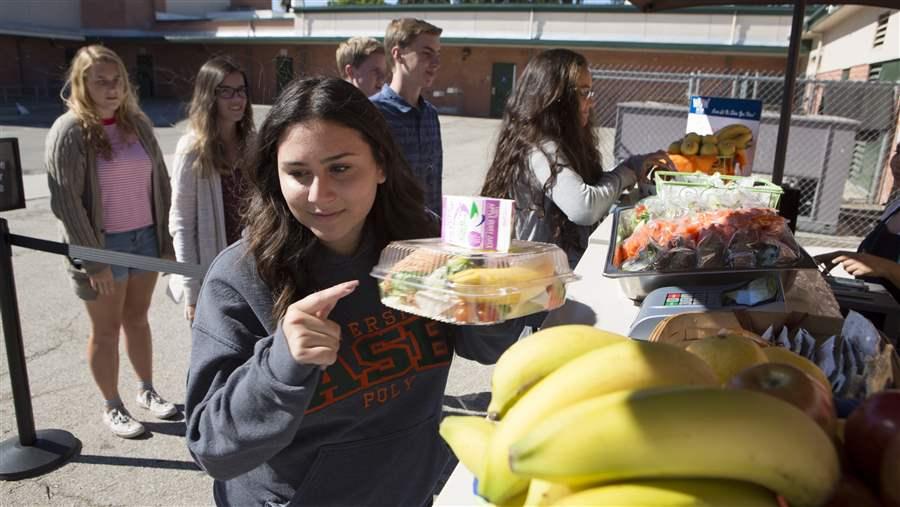Pew Praises Bipartisan Senate Bill to Reauthorize Child Nutrition Act
 The Pew Charitable Trusts
The Pew Charitable TrustsStudents get school lunches that meet strong nutrition standards in Riverside, California.
WASHINGTON—The Senate Agriculture, Nutrition, and Forestry Committee unveiled legislation Jan. 18 to provide a five-year reauthorization of the Child Nutrition Act, which expired Sept. 30 and governs the national school lunch and breakfast programs.
The bill would expand support for the healthy meals and snacks required under the updated nutrition standards implemented since the fall of 2012. While not mandating specific changes to the standards, the proposal does instruct the U.S. Department of Agriculture to revise guidelines for meals’ whole grain and sodium content. It also contains key elements of the School Food Modernization Act, legislation sponsored by Senators Susan Collins (R-ME) and Heidi Heitkamp (D-ND) that would establish loan assistance and grant programs to help school districts upgrade their food service facilities and augment staff training opportunities.
Jessica Donze Black, director of Pew’s school nutrition project, issued the following statement:
“This proposal ensures that good nutrition remains the core ingredient in school meal programs. Importantly, the committee included authorization for funding to help the professionals who lead these complex programs get the tools they need to succeed. About 9 in 10 districts nationwide report needing additional kitchen equipment to prepare healthy meals, but few can afford these investments without financial assistance.
“Impressive progress has been made in just four years under current school food standards. Research shows that students are eating more fruit and finishing off larger shares of their entrees and vegetables. Cafeteria menus are offering a wider variety of delicious, nutrient-packed foods that all kids need. And the high-calorie treats that used to fill vending machines and a la carte lines are a thing of the past.
“In short, the nation’s science-based school nutrition standards are working. Most Republicans and Democrats—on the committee and across the public as a whole—want to see schools continue to make progress, and they will under this bill. Pew applauds the committee’s determination to give all students healthy options throughout the school day and encourages leaders in the House of Representatives to closely follow the bipartisan course put forward by the Senate.”
###
More information on child nutrition programs and the School Food Modernization Act is available at www.pewtrusts.org/school-food-legislation.
The Pew Charitable Trusts is driven by the power of knowledge to solve today’s most challenging problems. Learn more at www.pewtrusts.org.













